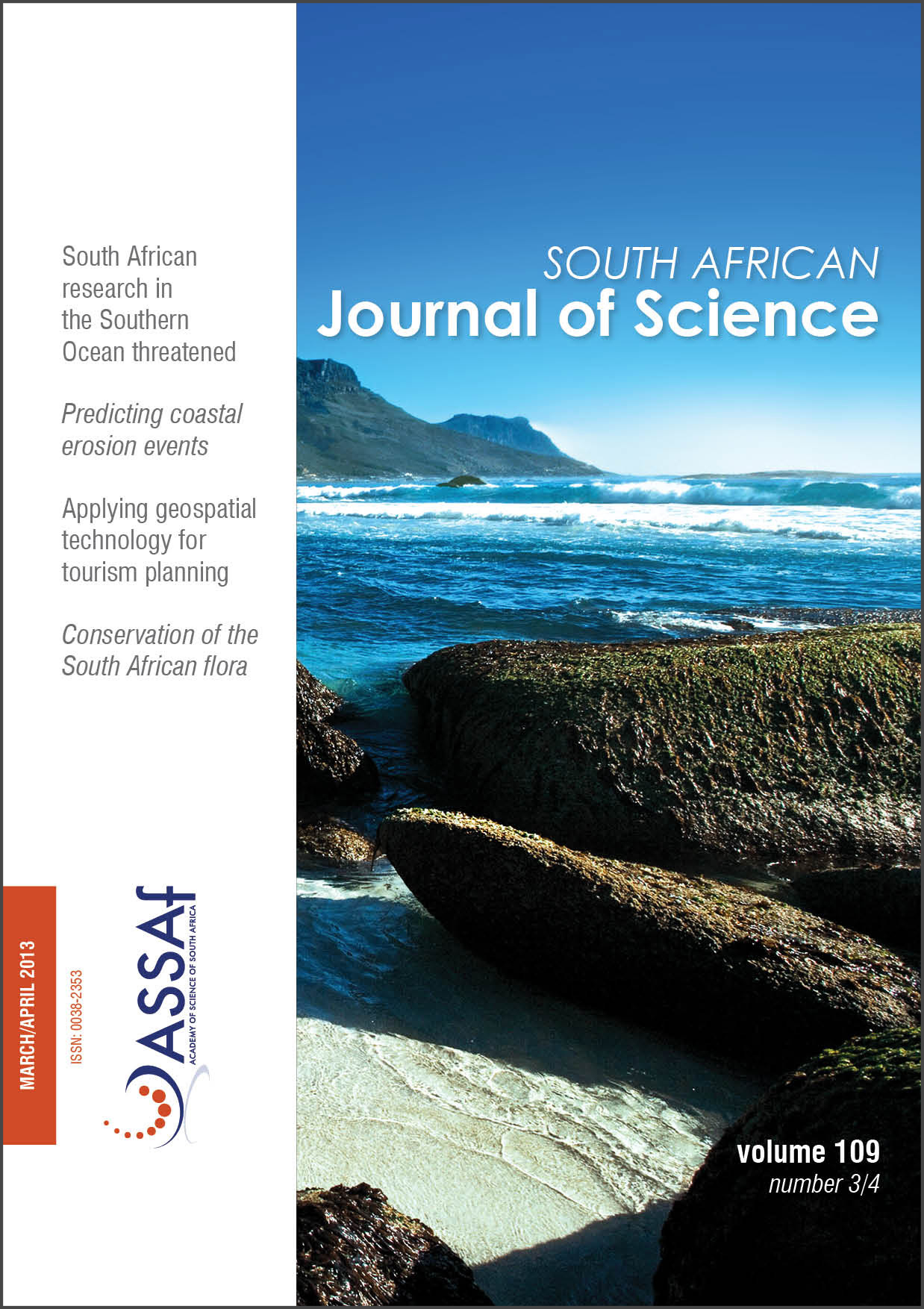Potential of texture-based classification in urban landscapes using multispectral aerial photos
DOI:
https://doi.org/10.1590/sajs.2013/1273Keywords:
aerial photograph, multispectral, object-based, urban, land coverAbstract
Multispectral remote sensing application in thematic urban land-use or land-cover (LULC) classification has gained popularity in the recent past. However, as a result of the complexity of urban landscapes and spectral limitations in commonly used imagery, accurate urban LULC classification has often been impeded by confusion of spectra among multiple urban LULC types. The emergence of multispectral aerial photographs, characterised by high spatial resolution and multispectral information, offers great potential for LULC classification. In this study, we hypothesised that textural information using optimum Haralick textural features inherent in multispectral aerial photographs can be used to generate reliable land-cover maps in heterogeneous urban landscapes. Haralick textural feature optimisation and object-based classification were used to discriminate diverse urban LULC types. Grey-level co-occurrence matrix (GLCM) Entropy, GLCM Mean and GLCM Angular Second Moment texture features were used to discriminate different LULC types while the Jeffreys–Matisuta separability analysis was used to identify optimum thresholds for the development of object-based classification rules. Results from object-based classification were also compared to classification output using the aerial photograph’s spectral information. Results show that use of both object-based Haralick textural features and the spectral characteristics on multispectral aerial photographs can be used to generate reliable LULC classes. Classification based on object-based Haralick textural features produced higher accuracy than that based on spectral information. Multispectral aerial photographs using both object-based Haralick textural features and spectral information offer great potential in mapping urban landscapes often characterised by heterogeneous cover types.
Published
Issue
Section
License

All articles are published under a Creative Commons Attribution 4.0 International Licence
Copyright is retained by the authors. Readers are welcome to reproduce, share and adapt the content without permission provided the source is attributed.
Disclaimer: The publisher and editors accept no responsibility for statements made by the authors
How to Cite
- Abstract 474
- PDF 455
- EPUB 187
- XML 219












.png)